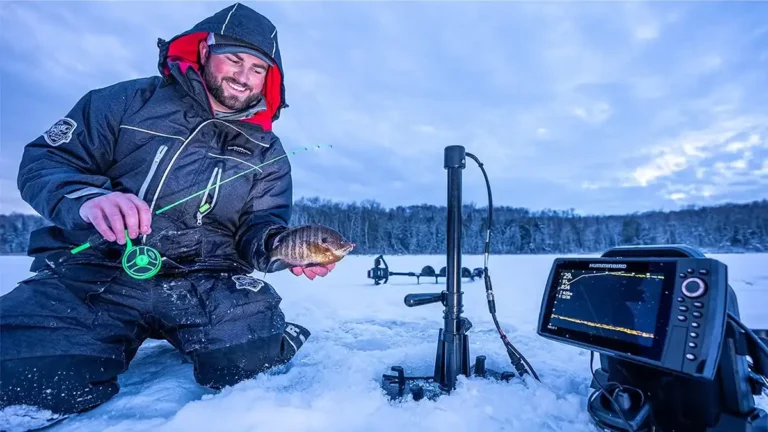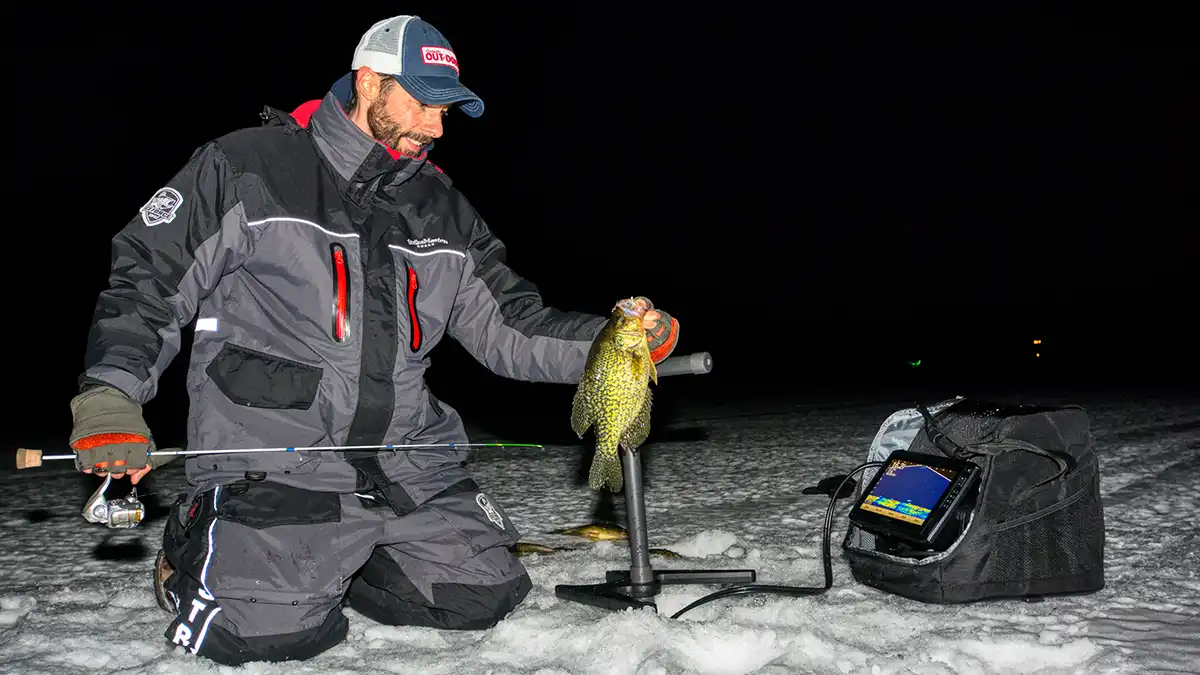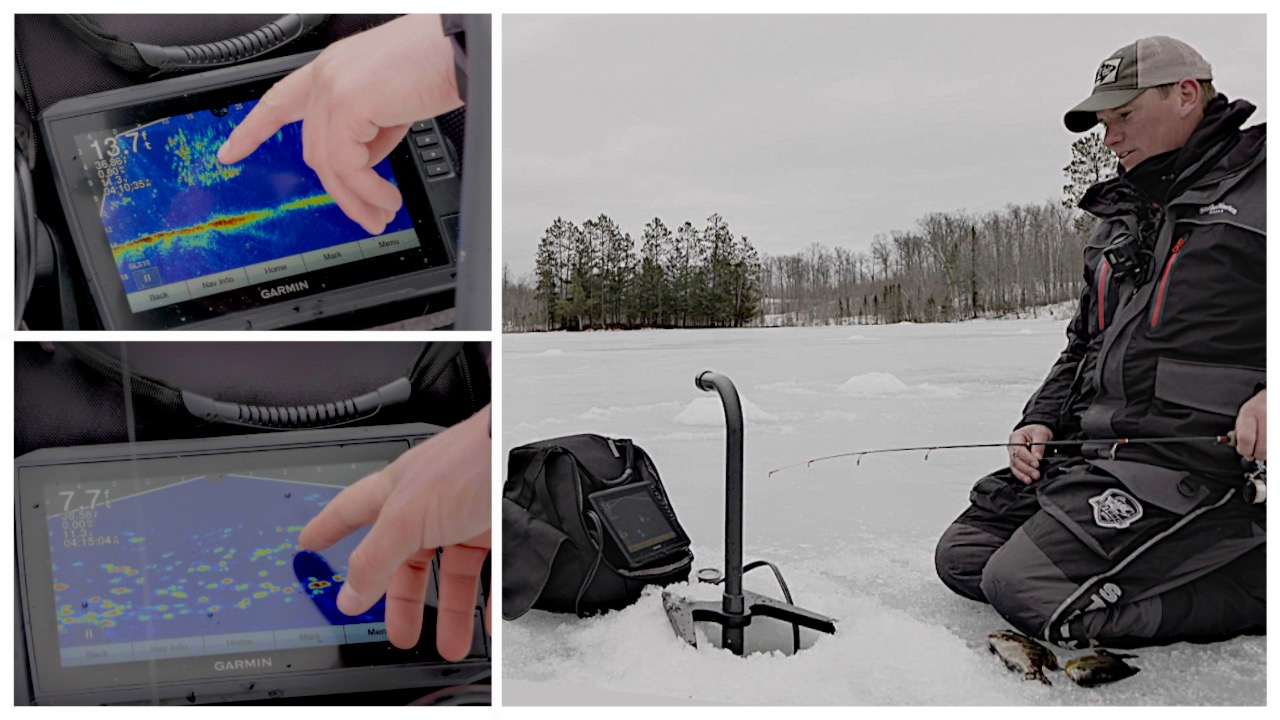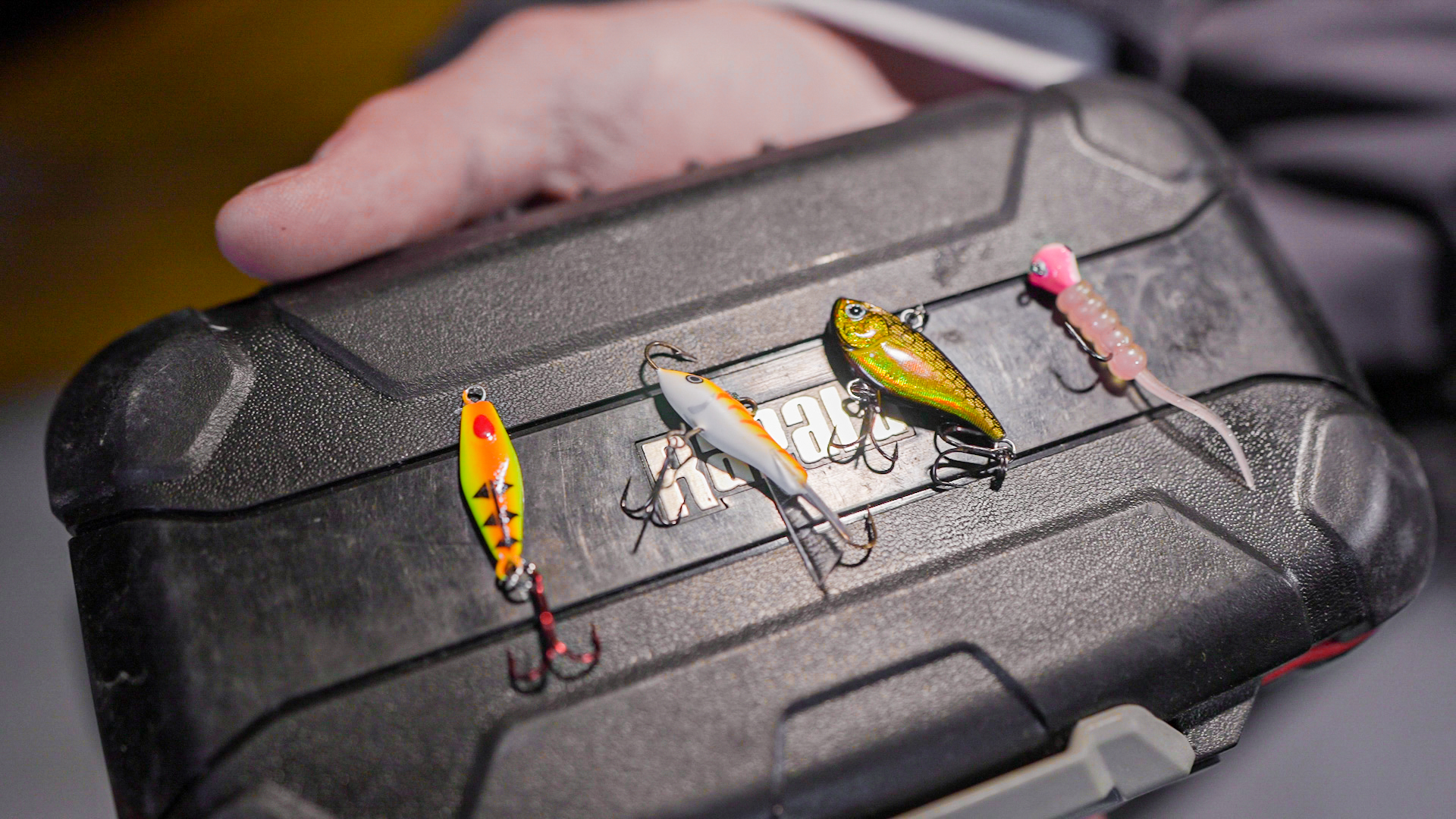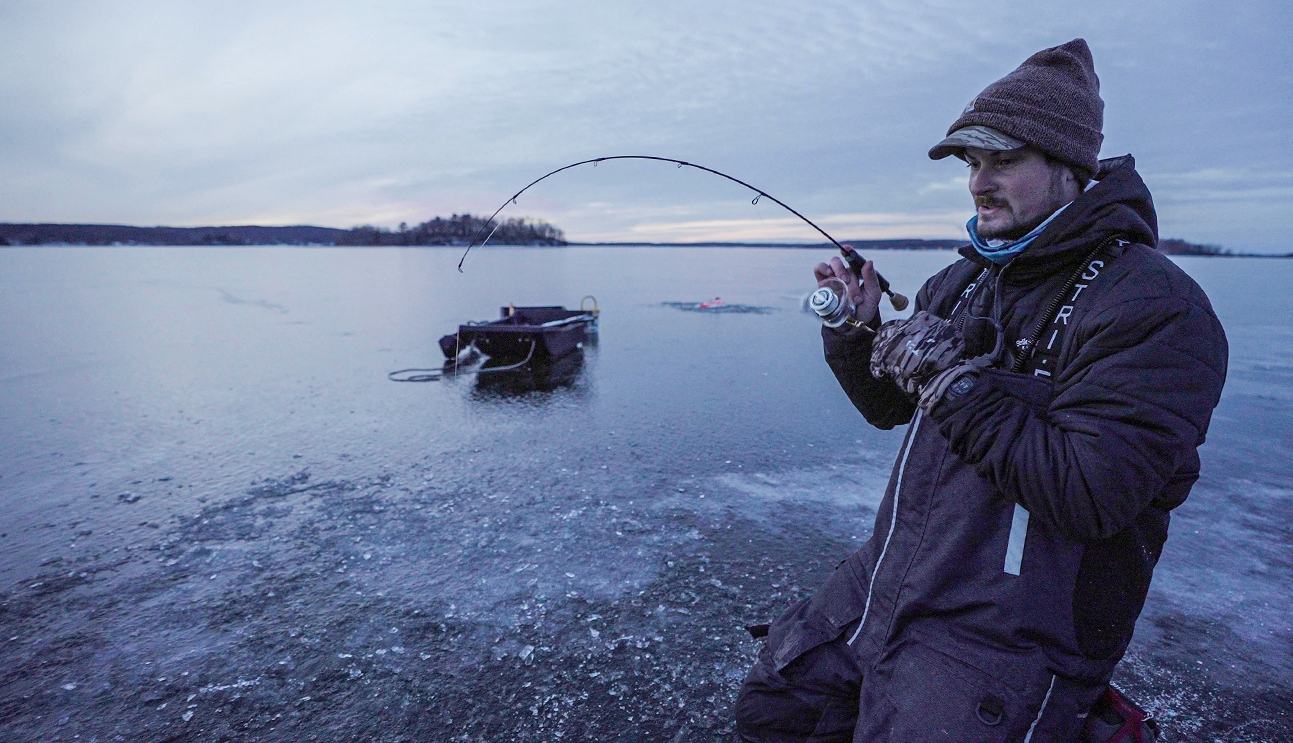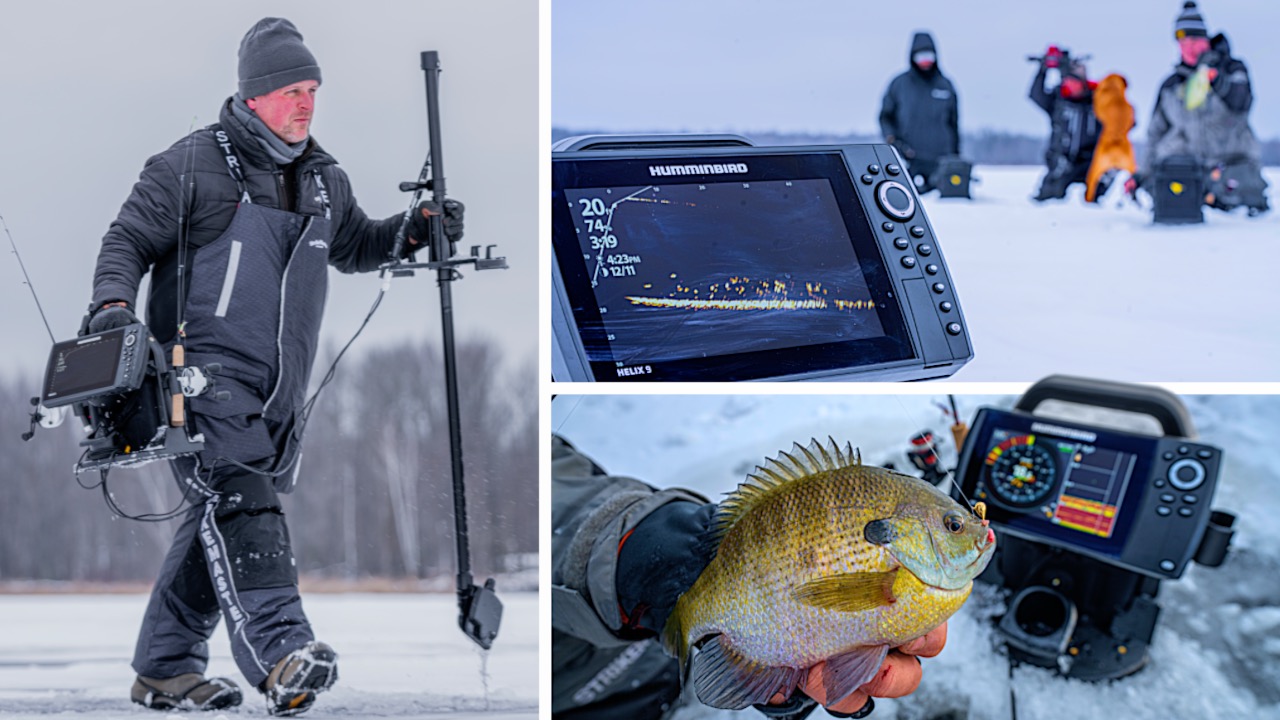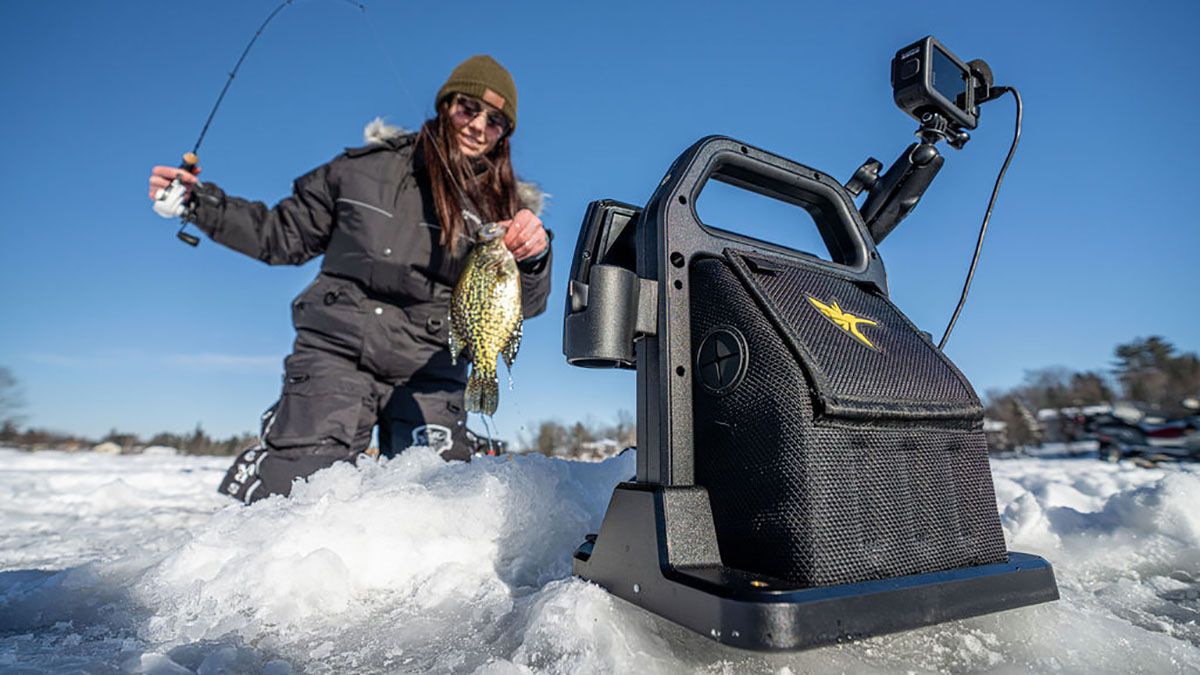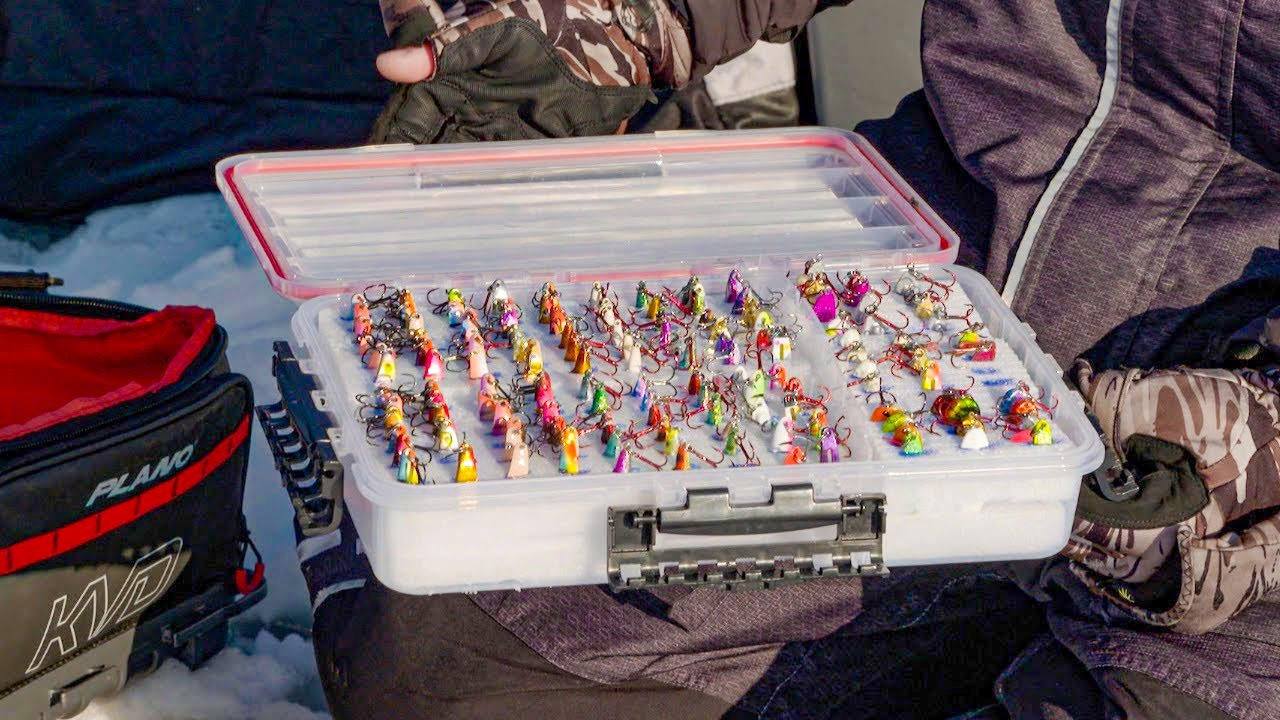The early ice fishing period is the best time to catch numbers of quality gamefish such as bluegills and crappies. The Wired2fish crew takes us on a backwoods adventure and shares how they find and catch quality bluegills using jigs and worms. To be the first to access these fish safely usually means excellent rewards, especially for those willing to hike into backcountry lakes. These ice fishing for bluegills tips will demonstrate how effective this time of year can be for panfish fishing.
TACKLE USED (retail links)
- ELECTRONICS – Humminbird ICE HELIX 9 MEGA Live Bundle
- JIG – VMC Tungsten Tubby Jig
- ROD COMBO – 13 Fishing Radioactive Pickle Combo, 27″ Ultra-Light
- LINE – Sufix Ice Fluorocarbon, 4-pound
- AUGER – StrikeMaster Lithium 40v LITE, 8-inch
- BIBS – StrikeMaster Pro Bibs
- JACKET – StrikeMaster Pro Jacket
Backwoods lakes are typically undisturbed scenic locations. Since only a handful of anglers venture out to these faraway places, the fish are often old and large with voracious appetites willing to eat a variety of presentations. In this video, Wired2fish’s Nick Dumke heads out to explore one such lake in search of big bluegills. After some research on satellite imaging, this lake stood out with its apparent spawning and feeding habitat while being tucked off the beaten path.
Once on the lake, start by drilling out a grid of holes roughly 15 feet apart while using your electronics. Ice fishing fish finders such as the featured Humminbird ICE HELIX 9 Bundle with MEGA Live Imaging speeds up the process of finding and staying on roaming schools of panfish. While crappie and bluegills are considered panfish, they each often occupy different portions of the water column and intermix. When bluegills are the target species, start at the edges of lake basins and focus on fish closer to the bottom. When seeking crappies, we typically head to the main lake basin, where they suspect and roam around.
You can read a fish’s mood by paying close attention to your electronics. How you see the fish move and react will dictate your speed and cadence with working your lures. It’s often a safe bet to start with the tried and true tungsten jig tipped with wax worms. Wax worms on a jig are often hard for even the most pressured and negative-reacting bluegills to refuse, and the tungsten jig helps detect light bites. Focus on low light periods during dawn and dusk as panfish begin to roam and feed more heavily during this time.
Check out these other great ice fishing tips.



